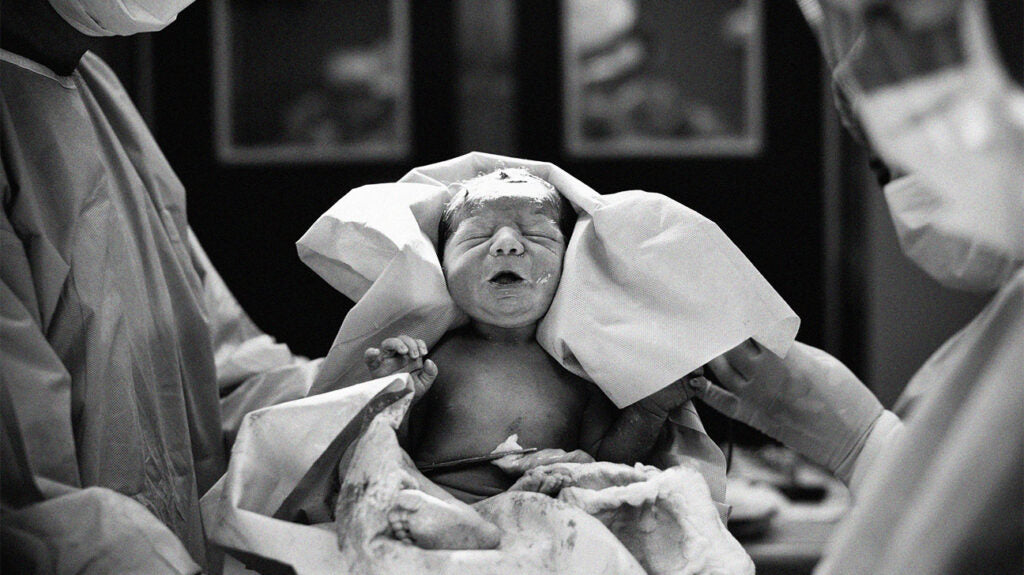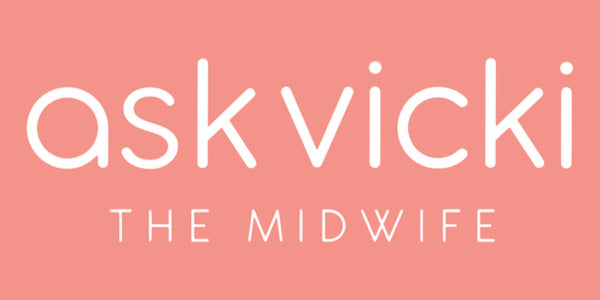
Caesarean section - Everything You Should Know
Share
Caesarean sections are classified into 4 categories. This surgery is conducted under a spinal or combined spinal/epidural block. This will be inserted by a obstetric anaesthetist who specialises in this procedure. General anaesthetics are rarely used unless it’s an extreme emergency or the mother has a pre-existing medical /surgical reason that prevents her from having a spinal anaesthetic.
Category 4
This is an elective section for a medical, surgical or obstetric reason in relation to the mother or baby or both. This can be a maternal choice with informed consent from your obstetrician. There is of course risks associated with surgery and your obstetrician /midwife will discuss any of your concerns for reassurance. Mother Nature still thinks she is in the 15 the century. Being pregnant or delivering a baby then (weather a member of the royal family or a peasant) was not a good “diagnosis”! We thankfully are in the 21st century and through medical and obstetric advancements these risks have been reduced enabling a positive outcome for mother and baby. I call a C section a “vaginal by-pass”…most importantly is a positive outcome .Your obstetrician will explain the operation procedure with you prior to signed consent.
Category 3
This is a caesarean section which occurs within 4-6 hrs. There is no threat of maternal or fetal compromise but the mother requires delivery to minimise any risks. Therefore there is no rush . eg. You are a booked caesarean section and you have started to contract or your “water “ ( amniotic fluid ) may have broken .
Category 2
This is a caesarean section which occurs within 30 minutes due to an obstetric complication that is not immediately life -threatening. The staff will be with you every step of the way.
Category 1
Is an extreme emergency if life threatening to a mother or baby . If this ever happens, the team of midwives will be with you at all times supporting both yourself and partner. This is an uncommon situation.
These categories can be escalated or de-escalated depending on the situation.
PROCESS AND PROCEDURE ( Elective CSection)
The date will be booked at 38-39 weeks gestation. Sometimes earlier if required due to a particular reason. A consent form will be signed by you with your obstetrician.
A pre-admission will be attended a week or 3 days prior to your booked date. It can be a face to face or telephone ( depending on COVID restrictions ). A midwife will get your antenatal/medical/ surgical/family history .You will give consent for baby for Vitamin K , Hepatitis injections, hearing screen and the new born screening. The midwife will explain the hospital admission and what the process is .Blood tests for the procedure will be attended within 72 hours prior to admission. It is advisable if you have pubic hair a wax of hair you can see with legs closed. Hospitals have surgical clippers so do not worry if you cannot do it at home. Wear minimal jewellery. We can tape jewellery if it cannot be taken off. A hair tie if you have long hair. Bring a camera ( we take lots of photos of the birth ) and any music you would like played during the procedure.
The anaesthetist the day before will either ring or meet with you to go through their procedure. They will advise you of fasting time .
The hospital admissions team will ring the day before advising you of your admission time .Generally CSection’s are done from 7am .
Once admitted to the post-natal ward , the midwife will orientate you to the ward .You will be put into a surgical gown ,your partner will be placed in scrubs ( wear closed in shoes).Teds (compression stockings ) on your lower legs .These prevent clots from forming in your legs whilst immobile. You will receive a small injection in your abdomen( daily) for 4-5 days to prevent clots from forming.
Your blood pressure and fetal heart will be taken.
You will be transferred to theatre with your partner. You will meet your midwife, that will be with you and your partner. The anaesthetist will place a intravenous (IV)cannula in your hand. IV fluids will give. You will sit up for the administration of the spinal block. The doctor will talk you through the process. It is effective and is designed to work very quickly .You will feel very heavy from the waist down .You will be place on your side .You may feel very “shivery “ and /or nauseated . You will be given medication through the IV if this occurs. Remember your midwife is there to support you.
You will be transferred onto the operating table .It is quite cold in the theatre .This prevents bacteria from growing .We will give you lots of warm blankets . The table is quite narrow. But you will not fall off ! A “wedge “will be put under one of your buttocks to keep the uterus form compressing a major blood vessel. A urinary catheter will be inserted ( the anaesthetic is very effective now so you won’t feel anything .The catheter protects the bladder during surgery and will be removed in 24 hours .Calf compressors will be on your calves this keeps blood following in your legs whilst immobile .These will stay on until your movement returns in 2-3 hours .The anaesthetic block will be tested before they commence .A screen will be placed in front of your chest until bub is born.
A paedatrician will be present. Post birth, they will review the baby everyday in hospital and then it will follow their care for the future.
Your skin is cleaned with anti-bacterial solution, then surgical drapes are placed on you. The surgical procedure is not complicated and your baby is out in a few minutes ,the screen is taken down and you will witness their emergence into the world ! Staff take lots of photos for you so you can enjoy their arrival. The baby will be blue but will start crying and turn pink . Delayed cord clamping for 1 minute . The baby will be given to the midwife, your partner can come over to cut the cord. The baby is reviewed , kept warm and given their immunisations. Weighed and measured, identification bands, wrapped (to keep warm )then brought over to you and your partner .We give you as much skin to skin time as you want , but the theatre is cold so we want the baby well wrapped until we transfer you to recovery .Sometimes babies need some breathing support …they come from breathing like a “fish “ to a human .Known as “wet lung “. If this happens they will need to be transferred to a special care nursery for extra support. The partner will come with us and the baby.
Depending on the surgeon the whole procedure takes 30 -40 minutes. The placenta is removed 1 minute after baby’s birth. Some mothers worry they cannot breast feed due to a C-Section . Once the placenta is removed, oxytocin and prolactin are released from the pituitary gland in your brain. This process brings down the colostrum and contracts the uterus .Whether a vaginal birth or C-Section . You are allowed to lose 500mls of blood at birth.
The wound will have a special dressing that heals the incision site. Usually it will stay on for 4-5 days, the dressing and sutures will be removed depending on your doctor’s orders.
You will be transferred to a more comfortable bed, the baby who is now in a nappy will be placed skin to skin between your breasts with warm blankets for your recovery . Once in recovery your midwife will assist you with breastfeeding as you will have limited mobility for at least another two hours when the spinal block wears off. You and your partner will usually stay in the recovery with your midwife for at least 30 minutes until you are stable . While in recovery we will give you some forms to sign being the birth registration, Medicare and your baby’s “bluebook” ( which will record for baby for the next 5 years all mile stones and immunisations) .
Then you, your partner and your baby will be transferred to the post-natal ward for the next part of your journey .The anaesthetist will have a regulated pain medication protocol and “break through” pain medication for you. Please take the meds for 2-3 days to get mobile and be comfortable with breastfeeding! If your pain score is above 3 out of 10, request extra medication. It is safe for bub . The anaesthetist will review you during your stay. Remember the midwives are there to support you and you can ask us anything …anytime. A sponge is done a few hours after your return until you are able to be assisted to the shower .Usually this will occur on the next day . The urinary catheter is removed at this time . 3 urines are measured after it is removed . Your vaginal bleeding will decrease over 3-4 days .Your stay is generally 4-5 days depending on your recovery progress. Regular aperient will be given daily to prevent constipation due to the surgery and some of the pain medications .
At discharge you will have a referral to the early childhood centre , you see the doctor at 6 weeks for a post natal check .The baby is also reviewed by the paediatrician at 6 weeks . You cannot lift no more than the weight of your baby or drive depending on your obstetrician’s advice.
Sometimes your baby can pick their “birthday “.They do not know they are an elective C-Section. If you feel you are having contractions ,your “waters “may have broken , any vaginal blood ( with or without pain),reduced fetal movements or you feel unwell…contact the labour ward at your hospital .It important to go in sooner than later !
PROCESS FOR EMERGENCY C-SECTIONS
The above happens a lot more quickly depending on the situation / Category of the C-Section. But remember we are there every step of the way to support you and your partner. It can feel very scary because of the speed of which everything is happening . You and your partner can feel you have no control of the situation .It is important after the event to debrief on your emergency event with a midwife .
Just because you have a C-Section does not mean a future vaginal birth can not happen with your next pregnancy .
Discuss your options with your obstetrician .
